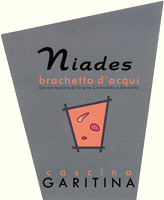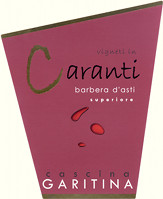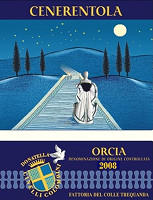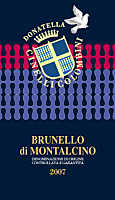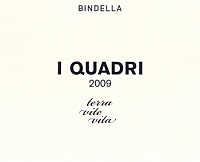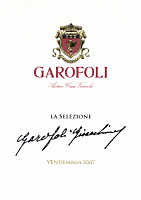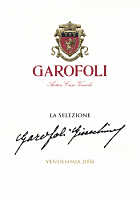|
There are many ways to taste a wine. The discriminating factor is, with no
doubt, the reliability of the result to be produced by the evaluation. Moreover,
the use to be done of what is perceived from the glass. Sensorial and
organoleptic tasting of a wine can be done for many reasons, from purely
personal and absolutely subjective reasons, as well as objective ones in order
to determine the correspondence of a wine to specific criteria, or to assess its
objective quality. The discriminating factor, despite of the goal of the
tasting, is represented by the fact of knowing the wine to be evaluated in
advance. To know what wine is about to be tasted, represents - however and in
any case - an element of influence for the objectivity and reliability of the
result.
To know in advance the wine to be tasted, completely changes both the evaluation
method, as well as the psychological and relational predisposition towards a
specific wine. It is undeniable every taster uses his or her own method of
evaluation, every one uses a method of personal relation with a wine,
using procedures and strategies developed and improved with time and experience.
There are, and this is undeniable as well, methods and criteria universally
agreed and used by almost every taster, methods that, with time, have proven
their reliability in a concrete way, although - like everything - they should
not be considered as absolute and indisputable. Everything can be
improved, of course, including the technique of sensorial tasting, not only
related to wine. In every case, the way with which the content of a glass is
being evaluated, and how it is being considered, radically changes both the
thought and opinion which one can have or form about a specific wine.
Every time a wine is tasted and it is known in advance, conditions influencing
its judgment will take place. This in fact guides our emotions towards a
certain direction, strongly influenced by the personal relationship and
prejudices the taster has towards all the known factors. To clear things, we are
not asserting the tasting of a wine which is known in advance should not be
done, however, it should be considered its reliability is very low. For example,
it should be considered the disappointment sometimes happening after
having bought a wine in a winery - and tasted in that place before buying it -
that, as it is tasted outside that context, it will not taste as good or
amazing as it was supposed to be. The emotional involvement of being in
the place where the wine is being produced, that for many represents a rare and
unusual event, positively prepares towards the wines which will be tasted, as
well as judging them better than they are for real.
|
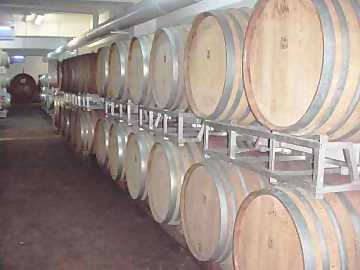 | |
| The view of barrels in a winery is a
suggestive view, however capable of influencing the emotional tasting of a wine | |
|
The tasting of a wine of which are known in advance its characteristics, is
technically called unblind tasting. Its opposite - blind tasting -
is achieved by scrupulously keeping hidden and unknown all the identifying
elements of a wine, with the exception of style, as this can be easily
recognized by a quick observation of the glass. Sometimes, in blind tasting -
according to its application, usually in wine contests - are also provided other
identifying elements, such as wine making style and aging condition. Blind
tasting, and this mainly depends by the aptitude of the taster, must not be seen
as an detached or impersonal practice, as it is absolutely normal
and understandable that during the evaluation of a wine emotions will develop.
Undoubtedly, the perception of a clean and pleasing aromas, will positively
predispose a taster towards a certain wine, whereas an unpleasing aromas will
drastically compromise its agreeability as well as the result.
In order to not compromise the objectivity of the result, in blind tasting it is
common to not show the bottle to the taster, as this represents a remarkable
identifying element represented by its shape. A Rhine bottle, for example,
directs the taster towards specific wines, mainly produced in Alsace or in the
Rhine, however to wines which can be associated to that style. Likewise, an
Albeisa bottle, directs the taster towards wines produced in the Langhe area, in
particular the ones produced with Nebbiolo grape. It is undeniable producers,
with the exception of some commercial cases or for image purposes, tend to
bottle their wines in bottles having “coded” shapes and which can be
associated to a specific style. Bordelais bottle is mainly used for red wine
having a good or full body, as well as for full bodied white wines, whereas
Burgundy bottle is frequently used for elegant red wines - in particular, Pinot
Noir - as well as medium bodied white wines.
There are many factors capable of significantly influencing the evaluation of a
wine, most of the times in a strong positive or negative way. Let's try to
understand the main factors and how they can affect the sensorial and emotional
process of tasting. Let's start from the places where the wine is created, or
better to say, evolves: winery. Visiting a winery, even better, the vineyards of
a producer, certainly is a highly educational and suggestive experience. On this
regard - it should be said and remembered - visiting a winery and focusing on
the tasting of wines only, maybe in a specific room, without having the chance
of visiting vineyards, in particular when they are in their full vegetative
process, the visit loses most of its charm and meaning. Not less important, to
visit a winery without having the chance to see the places where the grape is
being transformed into wine and is kept until the moment of bottling.
These conditions - it should be said - despite representing a high and unique
chance for understanding a wine, its produces and the places in which it is
being produced, however adds an element of “disturb” at the moment of the
tasting of those wines and in those places. This type of disturb
generally predisposes to a positive evaluation of a wine, with a strong
emotional involvement following the visit in vineyards, winery, and the pleasure
of being in the places where those wines are being produced, conditions which
are certainly uncommon in the daily life of most of visitors. To this is also
added, of course, the presence of the producer who - understandably - reinforces
the involvement of the visitor by talking about his or her job, the places and
how he or she makes wine, the productive philosophy and, in a more or less
convincing way, of what will be found in the glass at the moment of tasting the
wines.
Listening to the producer's words while he or she is telling about vineyards,
winery and the wines he or she makes, certainly is a privilege to which would be
unforgivable to renounce during the visit. This is an unavoidable aspect, and
fundamental, during the visit to a winery, as well as a strong prejudicial
element which will influence the tasting of the producer's wines, frequently
predisposing the result in a positive way. It can in fact happen that, the very
same wine tasted in the winery and with the producer, when tasted in a different
context, or blind tasted, gives a very different result, disappointing the
pleasing memory of the visit to that winery. Disappointment which could be
lesser, as well as strengthening the memory of the visit, in case the same wine
is being tasted when it is known what we are going to pour on the glass. In that
case, will be the pleasing memory and emotions lived during the visit to the
winery to affect our positive predisposition towards that wine.
Of course, we are not saying wines tasted in the winery are considered better
than they are for real, however it is undeniable this specific condition
remarkably affects its agreeability. The tasting done on one's own or in company
of others, generally gives quite different results. Solitary tasting
forces, like to say, to a more direct and contemplative relationship with the
glass and its content, a condition generally not happening when the same wine is
being tasted in company of friends. In fact, in these contexts, multiple
conditions frequently take place, distracting the taster from the real content
of the glass, and the condition of being together generally becomes dominant
and, frequently, also the will to become the leading figure in that group may
happen. In other words, a wine it is not tasted with the spirit of determining
its real profile, indeed, the persons are mainly focused to a sort of
competition with the goal of proving one's own talent and skill which will
unavoidably end up to influence the perception of others.
The subject of wine usually involves the pride of the consumer, both for reasons
associated to tradition and culture, as well as for showing one's knowledge,
presumed or real, to the others. For this reason, in group tasting, it will be
the opinion of the person considered to be the “more competent” to influence
the opinion of others. In case in the group are present two or more “experts”,
competition and confusion of others will happen for sure. Emotional tasting is
sometimes used for expressing concepts, ideas and feelings which are alien to
wine and its world, but use the beverage of Bacchus as a pretext and as a way of
expression. Wine is in fact used to evoke views, emotions and feelings, to tell
stories having no connection to wine, but seeming to have with wine, in that
moment and like a tale, a sort of connection.
In this case enter the scene animals, plants, places and the most bizarre
suggestions, adjectives and substantives, used for showing off one's skill of
eloquence and of literary talent, most of the times completely out of the
context of wine. If it is true that in sensorial tasting - in particular in the
olfactory evaluation of a wine - for the description of an aroma it is used the
association with “known” elements instead of referring to the molecule
producing that smell, sometimes the association is excessive and the account
seems to talk about something else while pretending to talk about wine. In these
cases, to know the wine to be tasted in advance, strongly helps the evocative
and emotional process, even directing the search of terms used for the
description. The result, from a “technical” point of view, is however
negligible and not reliable at all, moreover, it is affected by the personal
prejudice or predisposition towards a specific wine, specific grapes, producers,
places and wine styles.
Another prejudice affecting the result of emotional tasting, is the personal
relationship one has with specific producers, grapes and wine making areas. For
example, in case a taster has a predilection for Merlot, the taste of any wine
produced with Merlot grape will certainly have a better consent in case this
factor is revealed in advance. Likewise, in case a grape is not liked by the
taster, by knowing in advance the wine to be tasted is produced with that grape,
this would determine an adverse and prejudicial attitude. The same happens for
any other factor: for example, the blind position of denigrating wines of a
certain area - usually for purely local pride - usually brings to the
exaltation of the wines produced in the area of the taster or for which the
taster has an unconditional admiration. Emotional tasting greatly simplify the
process of wine evaluation, with that, also the reliability and trustworthiness
of the result. This does not mean every wine must be blind tasted, however it
should be considered the result of emotional tasting is always and in every case
affected by disturbing elements compromising its reliability.
|


